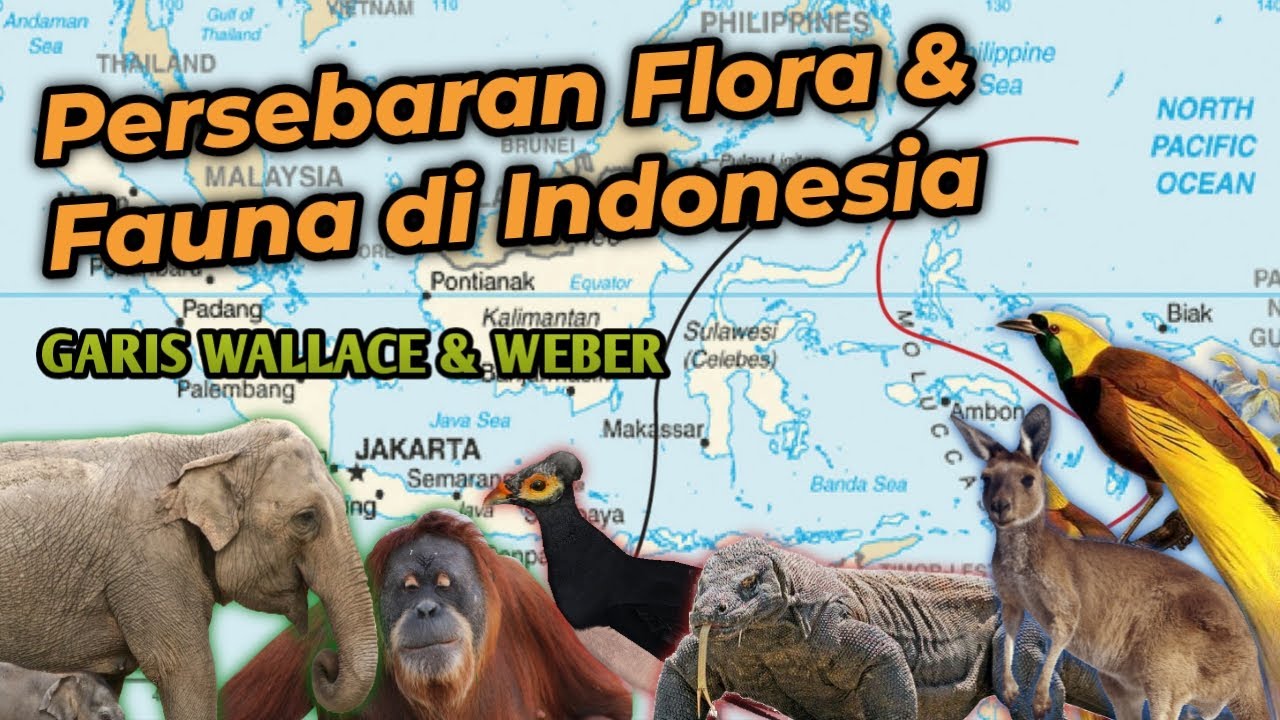Keanekaragaman Hayati Hutan Lindung Sungai Wain | Amazing Indonesia Kalimantan Timur
Summary
TLDRThis video takes viewers on a journey through the Sungai Wain Protected Forest in East Kalimantan, showcasing the rich biodiversity and unique flora and fauna of the area. Hosted by Halif Sardi, a nature enthusiast, the video highlights the importance of preserving the environment amidst rapid development. It explores the forest’s ecosystems, featuring medicinal plants, rare orchids, and endangered species like the orangutan and the proboscis monkey. The video also discusses the threats to the forest, such as deforestation and illegal logging, and the efforts to promote eco-tourism and environmental education to ensure the sustainability of Indonesia’s natural heritage.
Takeaways
- 😀 Halif Sardi, an environmental enthusiast from East Kalimantan, explores Hutan Lindung Sungai Wain, a preserved forest that houses diverse flora and fauna.
- 😀 The forest is home to endemic species like the black orchid, orangutans, tarsius, and proboscis monkeys, highlighting its rich biodiversity.
- 😀 Key trees in the forest include the large-sized bengkirai, meranti, and ulin, all unique to Kalimantan and vital for the local ecosystem.
- 😀 Bajakah, a medicinal plant found in the forest, has gained attention for its health benefits, though its consumption is carefully monitored and researched.
- 😀 The forest is also an eco-tourism site, with efforts to educate the public on the importance of preserving natural resources through sustainable practices.
- 😀 QR codes are placed on trees to provide information about their species and benefits, helping to raise awareness and enhance environmental education.
- 😀 Hutan Lindung Sungai Wain plays a crucial role in research related to botany and wildlife, serving as a field for studying native plant and animal species.
- 😀 Despite its natural beauty, the forest faces significant threats, including illegal logging, forest fires, and land encroachment.
- 😀 The forest's historical significance dates back to the 1930s, when it was first recognized as a protected area by the Sultan of Kutai.
- 😀 Conservation efforts are critical, and eco-tourism initiatives aim to raise awareness and fund the preservation of the forest for future generations.
Q & A
What is the main focus of the video?
-The video focuses on the environmental conservation efforts in the Sungai Wain Protected Forest in Kalimantan Timur, Indonesia, highlighting the region's biodiversity, the threats to its ecosystem, and the importance of preserving the forest.
Who is Halif Sardi and what motivates him in the video?
-Halif Sardi is a nature enthusiast from Kalimantan Timur. He is motivated by the decline in biodiversity and the depletion of genetic resources to understand the current state of the environment in his region and to raise awareness about the importance of preserving it.
What is the significance of the Sungai Wain Protected Forest?
-The Sungai Wain Protected Forest is an important natural reserve in Balikpapan, Kalimantan Timur. It is home to a variety of endemic flora and fauna and plays a vital role in biodiversity conservation and environmental education.
How has the Sungai Wain Forest been impacted by human activities?
-The Sungai Wain Forest has been affected by deforestation, illegal logging, and forest fires, particularly from the 1997-1998 forest fires. Despite this, parts of the forest have been rehabilitated and preserved.
What is the role of Agus Din in the forest?
-Agus Din is a forest supervisor at the Sungai Wain Protected Forest. He helps manage and protect the forest, including overseeing the sustainable use of its resources and educating the public about the forest’s value.
What is unique about the flora in Sungai Wain?
-Sungai Wain is home to unique plant species such as the Bajakah root, which has gained popularity as a traditional herbal remedy. The forest also contains a wide range of endemic plant species, including 17 species from 80 plant families.
What types of animals can be found in Sungai Wain?
-Sungai Wain is home to a variety of endemic wildlife, including primates like orangutans, long-tailed macaques, and tarsiers. Other notable animals include the Bekantan (proboscis monkey), sun bears, and several species of wild cats and birds.
What is the purpose of the QR barcodes on trees in the forest?
-The QR barcodes on trees are used to provide educational information about the tree species. When scanned with a smartphone, the barcode links to information on Wikipedia, helping visitors learn more about the tree's type and benefits.
How is the Sungai Wain Protected Forest used for research and education?
-The forest serves as a center for research on botany and wildlife. Researchers and students can explore the rich biodiversity of the area, which provides valuable insights into the conservation of endemic species and sustainable forest management.
What is the main concern regarding the future of the Sungai Wain Forest?
-The main concern is the ongoing threat of deforestation, illegal logging, and land conversion, which could lead to a significant loss of biodiversity and disrupt the vital ecosystem services the forest provides.
Outlines

This section is available to paid users only. Please upgrade to access this part.
Upgrade NowMindmap

This section is available to paid users only. Please upgrade to access this part.
Upgrade NowKeywords

This section is available to paid users only. Please upgrade to access this part.
Upgrade NowHighlights

This section is available to paid users only. Please upgrade to access this part.
Upgrade NowTranscripts

This section is available to paid users only. Please upgrade to access this part.
Upgrade NowBrowse More Related Video

Alam Liar Terakhir Pulau Terbesar Ketiga | Pulau Kalimantan – Part 1

Ecossistemas Brasileiros: Mata atlântica, Amazônia e Mata dos Cocais – Ciências – 7º ano – E.F.

Ecologia - Aula 10 - Biomas do Brasil: Amazônia, Mata Atlântica, Pantanal

Garis Wallace dan Weber - Persebaran Flora & Fauna di Indonesia | Dunia Biologi

PERSEBARAN FLORA DAN FAUNA DI INDONESIA

Fauna y flora en abundancia Capítulo 5
5.0 / 5 (0 votes)